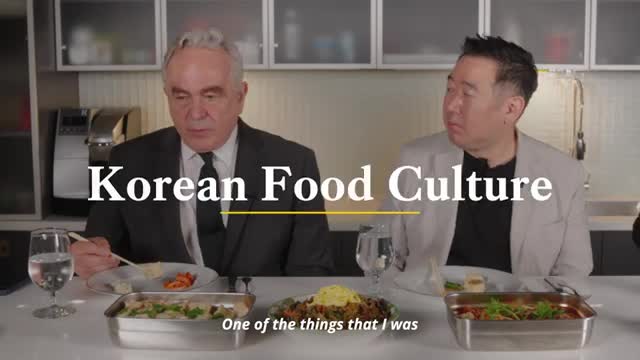Community event highlights North Korean food traditions, post‑famine adaptations
January 11, 2025 | US Department of State
This article was created by AI summarizing key points discussed. AI makes mistakes, so for full details and context, please refer to the video of the full meeting. Please report any errors so we can fix them. Report an error »

Jane, a community member who said she was born in North Korea, brought traditional dishes to a local cultural event on Oct. 12 and described recipes she learned from her mother and grandmother.
“So the food that I brought today is, based on recipes from my mom and grandmother. So pork dumplings are definitely North Koreans' favorite food,” Jane said, describing the dumplings’ texture and the role of pork in the dish.
The event's interviewer and other guests discussed how Korean food has changed as it spread internationally. Danny Lee, a guest at the event, said the global rise of Korean popular culture and the internet has increased curiosity about Korean cuisine and created opportunities for chefs to innovate.
Jane described differences between North and South Korean cooking, saying North Korea “always keeps, like, a traditional ways of cooking” and that she tries to preserve memories of tastes and techniques from her youth. She said ingredients gathered from forests—mushrooms and other foraged items—became important after the 1998 famine.
“After the famine era in North Korea back in 1998, we became really entrepreneur, like, because we need to survive in the food. So we started looking for ingredients in the forest and then collecting mushrooms and everything, selling them in the black markets,” Jane said. She added that those activities changed how people accessed and sold food.
Speakers at the event framed the food discussion as both a matter of cultural preservation and practical adaptation. Jane said she teaches her children North Korean heritage and cooking, linking recipes to family memories even though she experienced hunger as a child.
The conversation was descriptive and anecdotal; no policy actions or formal proposals were discussed at the event. Attendees emphasized culinary heritage, memory, and how economic pressure after the famine influenced everyday food practices.
“So the food that I brought today is, based on recipes from my mom and grandmother. So pork dumplings are definitely North Koreans' favorite food,” Jane said, describing the dumplings’ texture and the role of pork in the dish.
The event's interviewer and other guests discussed how Korean food has changed as it spread internationally. Danny Lee, a guest at the event, said the global rise of Korean popular culture and the internet has increased curiosity about Korean cuisine and created opportunities for chefs to innovate.
Jane described differences between North and South Korean cooking, saying North Korea “always keeps, like, a traditional ways of cooking” and that she tries to preserve memories of tastes and techniques from her youth. She said ingredients gathered from forests—mushrooms and other foraged items—became important after the 1998 famine.
“After the famine era in North Korea back in 1998, we became really entrepreneur, like, because we need to survive in the food. So we started looking for ingredients in the forest and then collecting mushrooms and everything, selling them in the black markets,” Jane said. She added that those activities changed how people accessed and sold food.
Speakers at the event framed the food discussion as both a matter of cultural preservation and practical adaptation. Jane said she teaches her children North Korean heritage and cooking, linking recipes to family memories even though she experienced hunger as a child.
The conversation was descriptive and anecdotal; no policy actions or formal proposals were discussed at the event. Attendees emphasized culinary heritage, memory, and how economic pressure after the famine influenced everyday food practices.
View the Full Meeting & All Its Details
This article offers just a summary. Unlock complete video, transcripts, and insights as a Founder Member.
✓
Watch full, unedited meeting videos
✓
Search every word spoken in unlimited transcripts
✓
AI summaries & real-time alerts (all government levels)
✓
Permanent access to expanding government content
30-day money-back guarantee
